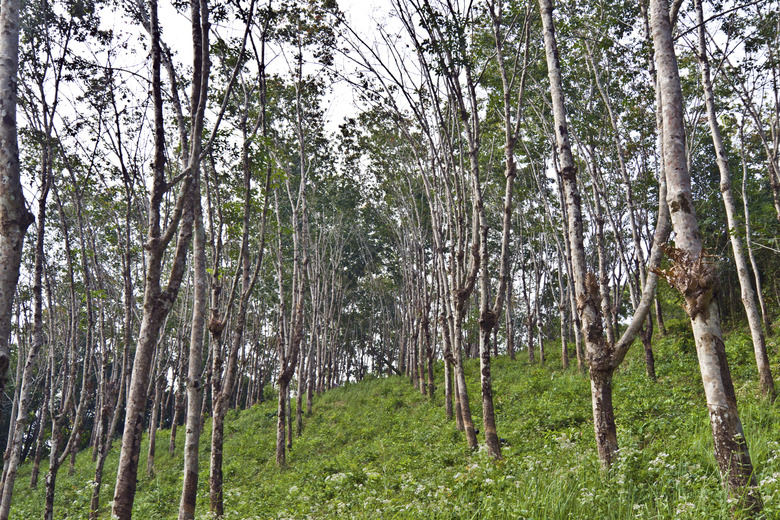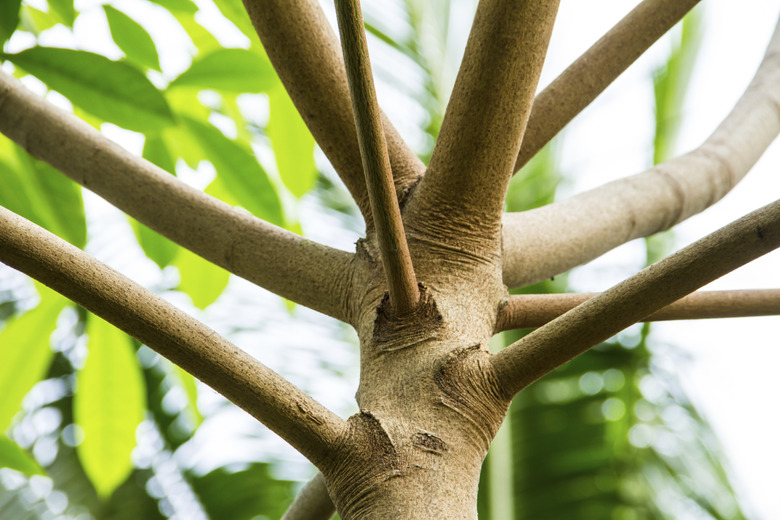Toxicity Of The Rubber Tree Plant To Dogs
Is a rubber plant toxic to pets? The answer to that question depends on which kind of rubber plant it is — there are several types. The terms "rubber plant" and "rubber tree" are commonly used as catchalls for describing several different plants. Certain rubber plants do have some toxic potential, depending upon the genus and species. However, the toxicity levels vary depending on the plant and how much of it is consumed by the dog or other animal in question.
Types of rubber plants
Types of rubber plants
The Crassula arborescens is commonly referred to as the Japanese rubber plant. The rubber tree is formally named Ficus elastica, and the variegated rubber plant is Ficus Honduras. The baby or American rubber plant is Peperomia obutsifolia.
The Indian rubber plant, Indian rubber tree, fig, and weeping fig are all names for Ficus benjamina. This version is the rubber plant toxic to pets, both dogs and cats. Avoid keeping the Ficus benjamina in your home, because if your dog ate this rubber plant, the situation could be serious.
Symptoms of rubber plant poisoning
Symptoms of rubber plant poisoning
How do you know if you dog ate a rubber plant? If a dog ingests Crassula arborescens, it may cause vomiting, depression and a loss of coordination. Ficus elastica and Ficas Honduras will both cause moderate gastrointestinal tract irritation if ingested. Peperomia obutsifolia, may cause a dog to suffer some mild stomach upset if consumed, but is not considered to be dangerously toxic. Similarly, most plants in the genus Peperomia are not thought to be toxic to animals.
However, Ficus benjamina — Indian rubber plant — is toxic to dogs and cats. If this plant comes in contact with a dog's skin it can cause dermatitis, and ingestion is likely to cause oral irritation, salivation, and vomiting. Take your dog to the vet immediately, if you see all or any of these symptoms.
Identification of rubber plants
Identification of rubber plants
Rubber plants vary in size, depending on the exact species of plant, and grow outdoors in warm climates. The different types of rubber plants are similar in appearance. Rubber plants are most easily identified by their shiny, glossy leaves. Leaf shapes may vary, but are typically long, elliptical and have a thick, leathery texture. They may be dark green or pink in color.
The milky sap in the leaves and stems of the rubber plant is the part that makes it poisonous for animals. The amount of the rubber plant that the dog ingests will be a key factor in determining how sick the dog becomes.
Treatment for a dog that ate rubber plant leaves
Treatment for a dog that ate rubber plant leaves
If you believe your dog ate rubber plant leaves and are either uncertain of its toxicity or know it was toxic, call your veterinarian immediately. If your veterinarian wants you to take your dog in for immediate treatment, bringing a sample of the ingested plant to the veterinarian's office with you.
The ASPCA also operates a Poison Control Center Hotline for animals which is available 24 hour a day, 365 day. The number for this center is 1-888-426-4435. In the event you are unable to reach your veterinarian in a poisoning situation, you can call the ASPCA hotline for guidance and treatment advice.



